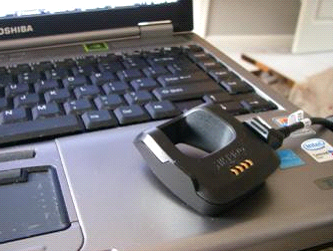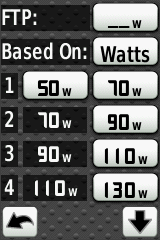Ray’s Weekly Sports Electronics Mailbag
Hello, welcome to the Weekly Mailbag. I'm Ray, from DCRainmaker. com. If you've ever searched for reviews on sports technology – you've probably come across my site. I write about my triathlon/running training in general, along with sports technology and whatever else seems interesting to me. I started the Weekly Mailbag series earlier this spring as an opportunity to share some of the answers of the many e-mailed questions I get each week.
If you enjoy what you find here, then feel free to click the links to find even more in depth information on each topic. And if you have any questions, you can always e-mail me directly. Thanks for reading!
1) How to deal with CompuTrainer HR Monitor Dropouts
2) Best books to train by HR?
3) Using the FR310XT for all three legs of a triathlon
Question #1: How to deal with CompuTrainer HR Monitor Dropouts
From Cormel-
"How do you deal with the HRM drop out on your CompuTrainer? I got mine in November, great tool, my cycling has improved already, but the HR info is useless as it drops constantly. Love your website, thought you might have some insight into the problem…"
Hi Cormel. You've hit the nail on the head when it comes to the one area that frustrates many CompuTrainer users – the heart rate strap and dongle/cable. Any frequent CompuTrainer user will tell you (as will their forums) that the CompuTrainer HR system tends to be one of the most frustrating elements of the setup. For those not familiar with it, heart rate on the CompuTrainer is measured at the handlebar unit using a 3.5mm cable (just like headphones) that connects to a small black dongle which acts as the receiver. From there you wear the Polar-compatible HR strap which wirelessly transmits your heart rate to the dongle.
The problem here isn't the Polar strap. In fact, that works just fine (I've used mine side by side with a Polar device and it had no issues). The challenge is the dongle and cable, which is notoriously finicky and prone to dropouts.
My general recommendation is that placement is absolutely key. You want it as close as you can get to yourself – but also in an area that doesn't get jiggled around by you or anything you do while pedaling. Thus, I recommend placing it just above the stem or fork on your handlebars, threading up in between aerobars if you have them. For me, that tends to be the place of greatest connection, least dropouts and highest overall success.
Finally a follow-on question that I get a lot is whether or not you can use your Garmin/ANT+ accessories with the CompuTrainer. Unfortunately you can't. And this is really too bad – as the coding effort to support the standard ANT+ stick would be a relatively trivial matter – and incorporating it into their upcoming RacerMate One suite would have been ideal. I've asked in the past (along with many others), and get a bunch of different answers each time I ask.
Sometimes they cite lack of demand, other times they cite lack of 'true real-time support', and finally, sometimes I hear that the "technology is not yet ready." Either way…looks like we'll all be fiddling with the HR dongles in the meantime.
Question #2: Best books for heart rate training?
From Bob-
"Love your blogs. I'm new to HRMs, and need to find the best way to train with one (likely the FR305). Are all books the same, or can you recommend one?"
Hi Bob. As you've probably discovered – there's a TON of books out there on using heart rate to train by. Like many genres of books, some are great…and some are pretty useless. The good news is that from a technology standpoint, training by HR is all the same regardless of device. Meaning, it won't matter whether you're using a Polar, Garmin, Timex, or cell-based devices; all these books will work equally well.
So the question then becomes one of which guide to choose from a training standpoint. And that's where it gets a bit tough. There's a lot of crappy training advice out there, especially in the heart rate training world. What you want to look for though is a book that really takes you through the science of heart rate training – one that explains exactly why you do what you do. I've got a slew of different books HR books on my book shelf – but the one that I can continually count on is the Triathletes Training Bible by Joe Friel. This book covers more than just training by heart rate – but also the reasons behind the training decisions. The book won't provide you with a simple guide though that you can just open and start using right away – you're going to have to read to understand things a bit and do some leg work…but it's worth it. You'll end up a much better athlete because of it. Additionally, Joe's also got sorta a complimentary book on that – Total Heart Rate Training that you may want to look into. I've got that two and both books help to complete the picture.
Of course, anytime you talk about training by heart rate – you get folks that will say training by heart rate has its flaws. And there's truth to that. But there's truth to that regardless of which method you use to train. There's simply no right answer – despite how badly folks in every camp will try and persuade you. You can train by power, by pace, by heart rate, by perceived effort, and any number of other ways. All methods have yielded successful athletes at the highest levels of our sport. No one way is the absolute 'right', but rather whatever way works best for you is right. Just something to keep in mind.
Question #3: Using the FR310XT for all three legs of a triathlon
From Mike-
"I found your blog while looking for some info on Garmin FR310XT GPS wrist watch. I can see from your info that this model can be used for Swim, Bike and Run. This is great for training, but how would it go in a race. For example transitioning from swim to bike, then bike to run. Would it take a lot of time to change the device to the specific discipline, i.e. will it add to my transition time. In a perfect world, could it track my swim, bike and run without having to mess about too much??"
I've got good news for you – it might indeed be a perfect world.
The FR310XT (along with the Timex Global Trainer) support a mode called 'Multisport'. This mode is sorta like the EZ-assist button for doing a triathlon. What it does is automatically switch you from sport to sport as you go through your race.
So as you exit the water and hit lap, it'll automatically switch from swim mode to bike mode. And then again from bike to run. You can even include transition times separately (or totaled) if you'd like. So you'd end with up five separate times and charts for a given race:
1) Swim
2) T1
3) Bike
4) T2
5) Run
Setting this up is super easy. I've outlined how to setup and use the Garmin watches in multisport mode in the past. And I also outline the FR310XT's menu's in multisport mode within the larger FR310XT review. Many athletes (myself included) use the multisport method to capture both the entire race, but also each segment in a way that allows easy analysis.
Recent Mailbags:
Weekly Mailbag – February 8th, 2011
– Garmin FR305 not charging/syncing without rubber band
– Garmin/Timex/Polar Product Release Cycles
– Accounting for slope on treadmill with running watches
– Determining your FTP using a CompuTrainer
Weekly Mailbag – January 28th, 2011 – Limitations and choice with Garmin power meter head units – CompuTrainer and RacerMate One Software – New Nike+ and TomTom Running GPS Partnership (Nike+ Sportwatch)
You can find all past Slowtwitch Mailbags here, and all prior ones here.
[Editor's note: our capable editor-at-large for electronics Ray Maker is the publisher of the online sports tech blog DC Rainmaker, one of the top-ranked sites by Google for extremely in-depth reviews of advanced GPS and Heart Rate Monitors for triathlon, cycling, and running. ]



